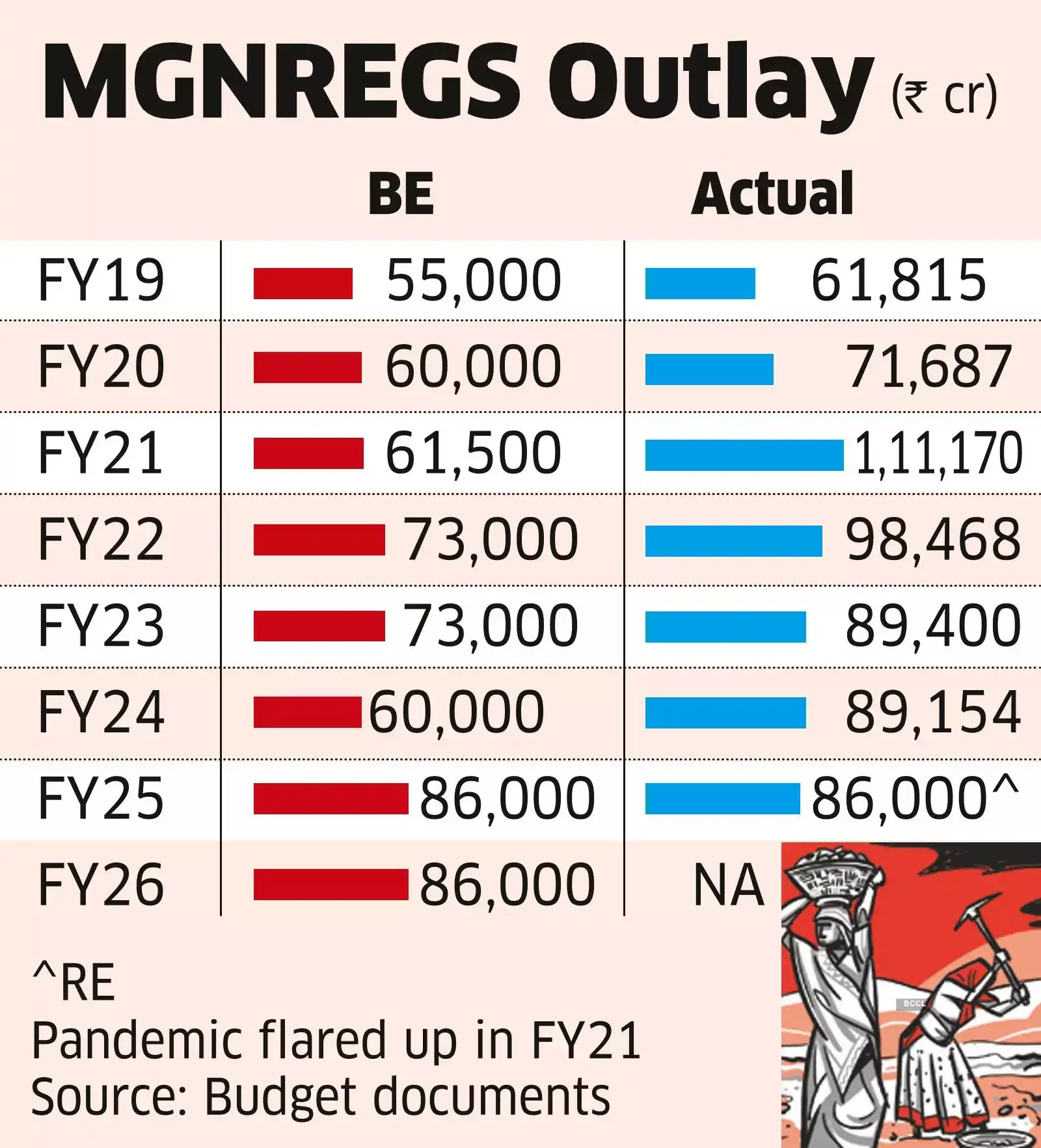Demand for mostly unskilled work under the scheme has moderated this year, with improved economic activities opening up better-paying job opportunities in various sectors.
Of the ₹86,000 crore budgeted for the Mahatma Gandhi National Rural Employment Guarantee Scheme (MGNREGS) for the current fiscal, about ₹61,600 crore has so far been released. The total spending so far stands at ₹54,217 crore, or 63% of the full-year allocation.

“The spending pattern this fiscal gives us the confidence that the scheme should be managed within budgeted outlay,” said the official, who did not wish to be identified.
In six of the past eight years, the government’s final NREGS allocations exceeded its budget estimates. Since it’s a demand-driven programme, allocations are adjusted if actual work demand deviates from the initial projections.
Preliminary data compiled by the rural development ministry showed about 1.43 billion person-days were generated under the MGNREGS in the first half of this fiscal, down 11% from a year earlier.The number of people who sought work under the scheme fell 8.5% in the first half of 2025-26 from a year before to almost 149 million.Earlier this month, the finance ministry started holding meetings with various ministries and departments to firm up revised estimates for the current fiscal, based on which parliamentary clearance will be sought in the next session for supplementary demands for grants for various schemes.
Demand moderated for a third straight month till September, with a steeper drop in September (27%) than in August (25%) and July (11.5%).
The latest fall in work demand came even on an unfavourable base (work demand had fallen in the second quarter of last year), reflecting the resilience of the rural economy, officials told ET recently. The plentiful monsoon rains this year also didn’t hamper the usual migration of labourers to agriculture during the monsoon season.
The economy expanded at a better-than-expected pace of 7.8%, a five quarter high, in the April-June period, despite uncertainties caused by the US tariffs and other external headwinds.
This prompted the International Monetary Fund to revise its 2025-26 growth projection for India to 6.6% from 6.4%, despite downside risks from the extra 50% US tariff on most Indian goods that came into effect from August 27.



